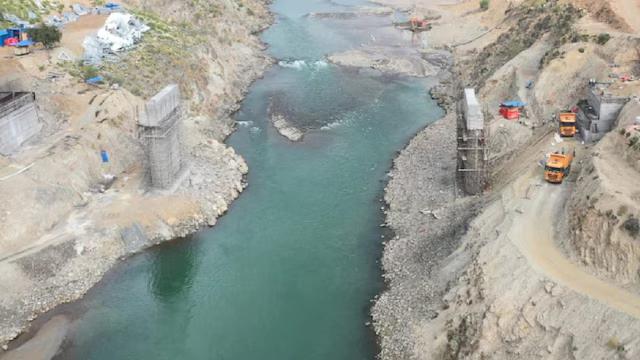
China Rushes to Build Dam in Pak as it Faces Water Scarcity after India’s IWT Move
The Indus Waters Treaty (IWT) between India and Pakistan has been a contentious issue for decades, with both countries having different perspectives on the sharing of water resources. The recent suspension of the treaty by India has led to a new wave of tension in the region, with Pakistan now facing a severe water scarcity crisis. In a bid to mitigate this crisis, China has announced that it will accelerate work on the Mohmand Hydropower dam project in Pakistan’s Khyber Pakhtunkhwa province.
The Mohmand Hydropower dam project, which began in 2019, was initially expected to be completed by 2023. However, with the suspension of the IWT, China has decided to expedite the project to help Pakistan overcome its water scarcity woes. The dam, which will have a capacity of 800 megawatts, is expected to generate enough electricity to power millions of homes in Pakistan.
The decision to accelerate the project comes as Pakistan is facing its worst-ever water crisis. The country’s water resources have been dwindling over the years due to a combination of factors, including climate change, population growth, and mismanagement of water resources. The suspension of the IWT has further exacerbated the situation, with Pakistan now facing a severe shortage of water for irrigation, industry, and domestic use.
Pakistan’s water scarcity crisis has been exacerbated by the recent heatwave that has gripped the country. Temperatures have been soaring, and the country is facing its hottest summer in decades. The heatwave has led to a surge in electricity demand, putting additional pressure on Pakistan’s already-strained power grid.
The suspension of the IWT was announced by Indian Prime Minister Narendra Modi in August 2022, following the killing of three Indian soldiers in a terrorist attack in Kashmir. Modi said that “water and blood cannot flow together” and that the IWT was no longer viable in the wake of the attack.
Pakistan has strongly protested the suspension of the IWT, calling it a “violation of international law” and a “threat to regional peace and stability”. The country has also accused India of trying to “starve” Pakistan of water and has threatened to take the matter to the International Court of Justice.
The Mohmand Hydropower dam project is a key component of Pakistan’s plans to overcome its water scarcity crisis. The dam will not only provide much-needed electricity to the country but also help to regulate the flow of water in the Indus River, which is the lifeblood of Pakistan’s agriculture sector.
The project is being built by the China Three Gorges Corporation (CTG), a leading Chinese energy company. The CTG has already completed several major hydroelectric projects in Pakistan, including the Gomal Zam Dam and the Satpara Dam.
The acceleration of the Mohmand Hydropower dam project is a significant development in the region, with far-reaching implications for Pakistan’s economy and politics. The project is expected to create thousands of jobs and stimulate economic growth in the region.
However, the project has also raised concerns about the environmental impact of the dam. The Mohmand Dam is expected to displace thousands of people and alter the natural ecosystem of the region. Environmental activists have expressed concerns about the dam’s potential impact on the local wildlife and the displacement of indigenous communities.
In conclusion, the suspension of the Indus Waters Treaty has led to a severe water scarcity crisis in Pakistan, which is now facing its worst-ever water crisis. China’s decision to accelerate the Mohmand Hydropower dam project is a significant development that could help Pakistan overcome its water woes. However, the project also raises concerns about its environmental impact and the displacement of local communities.



